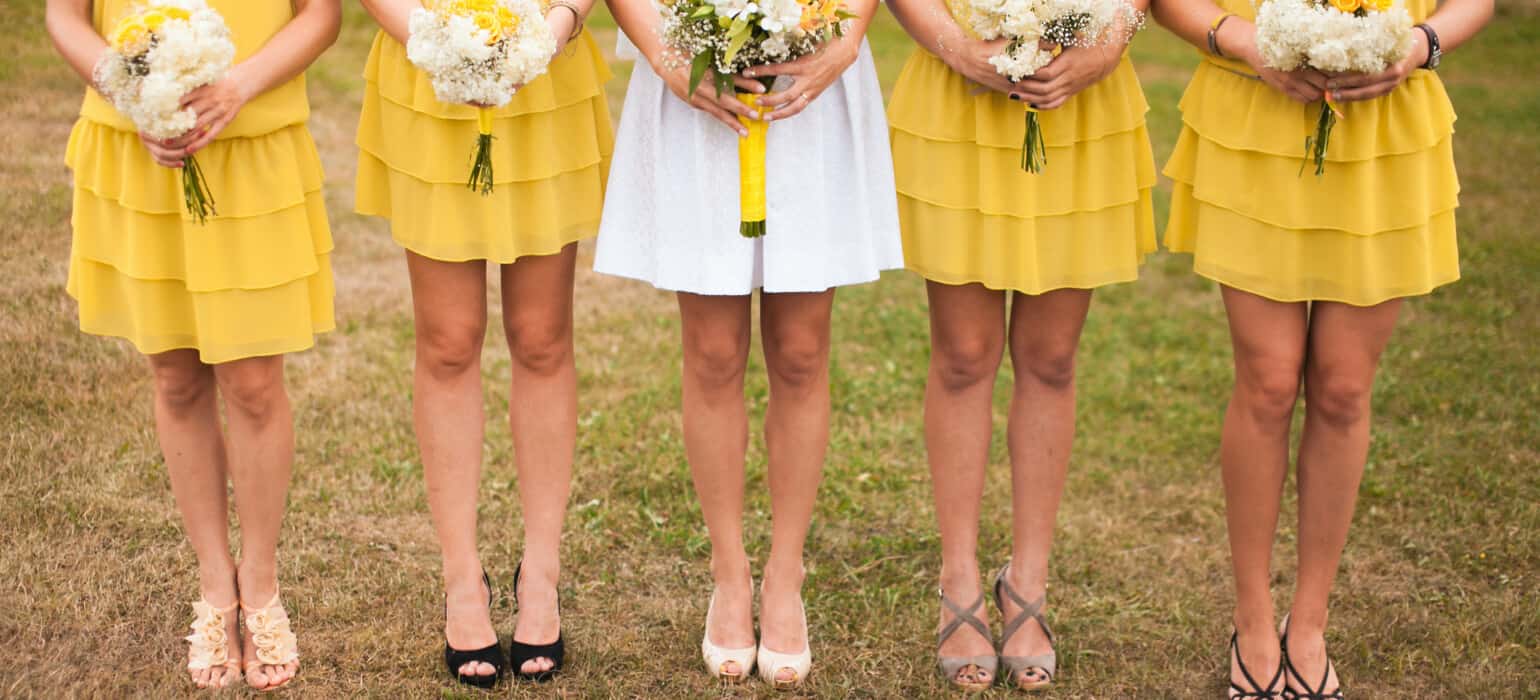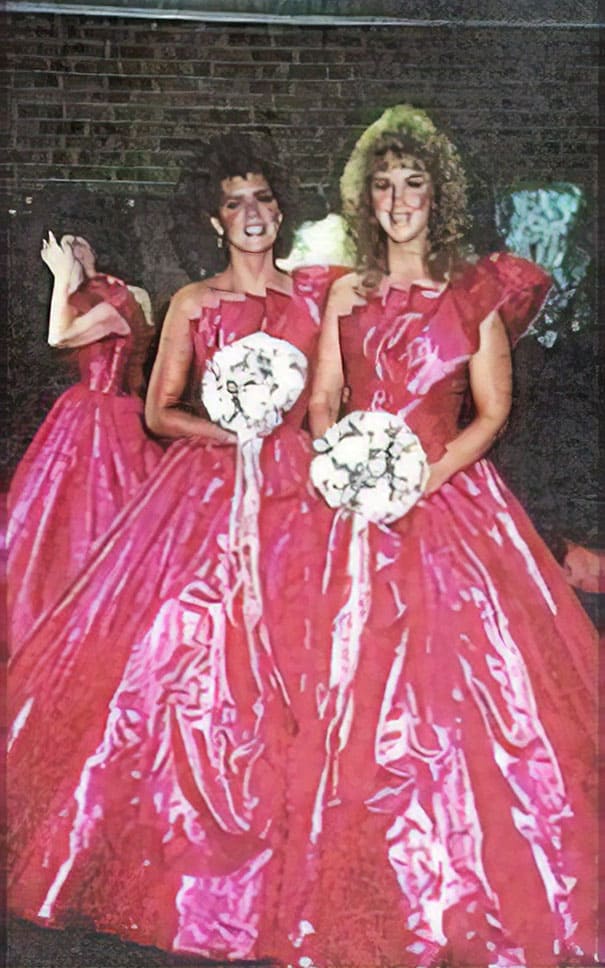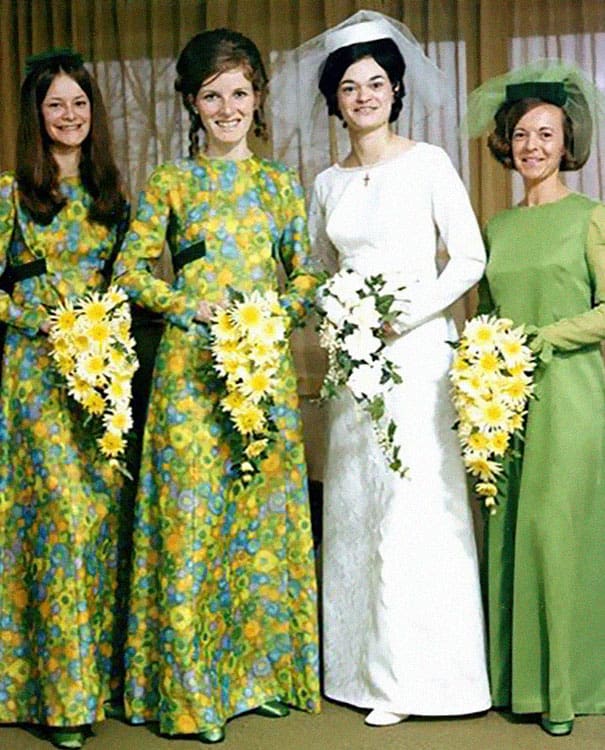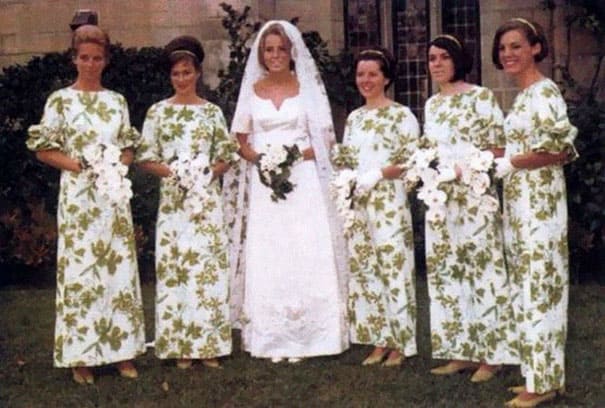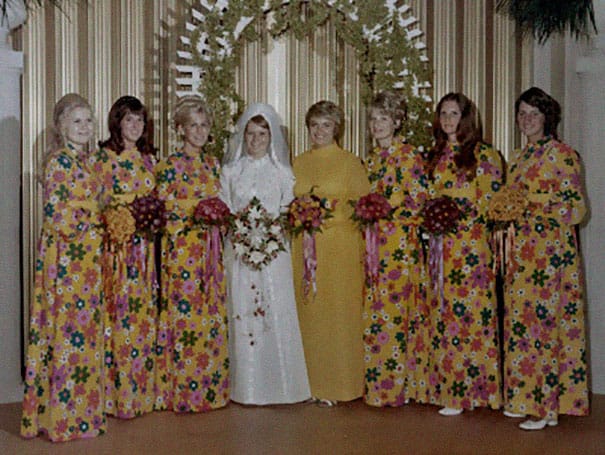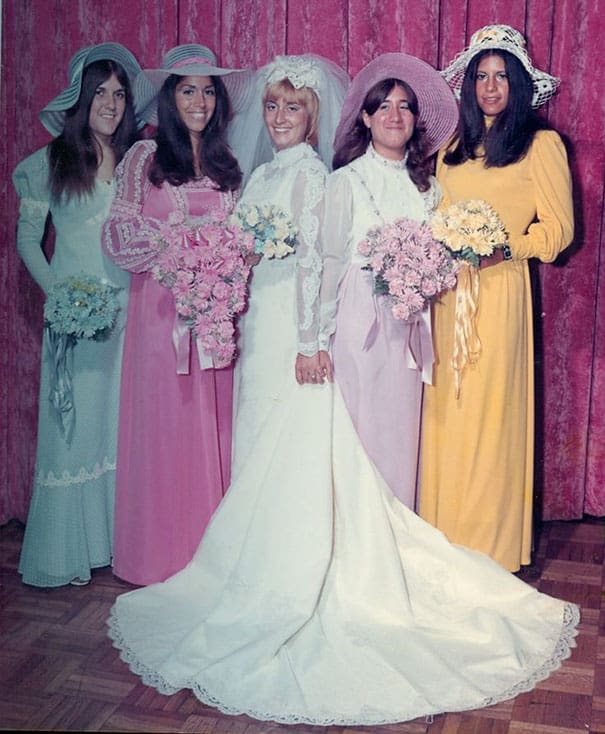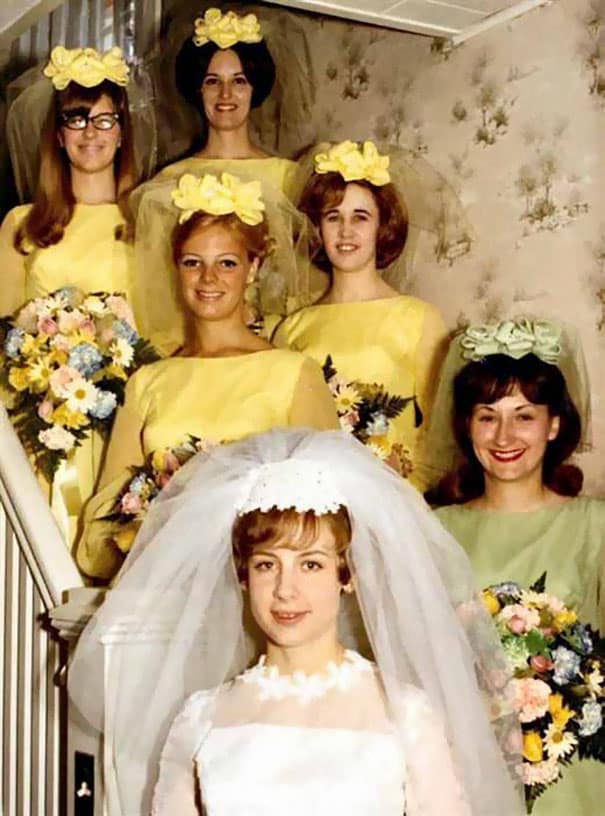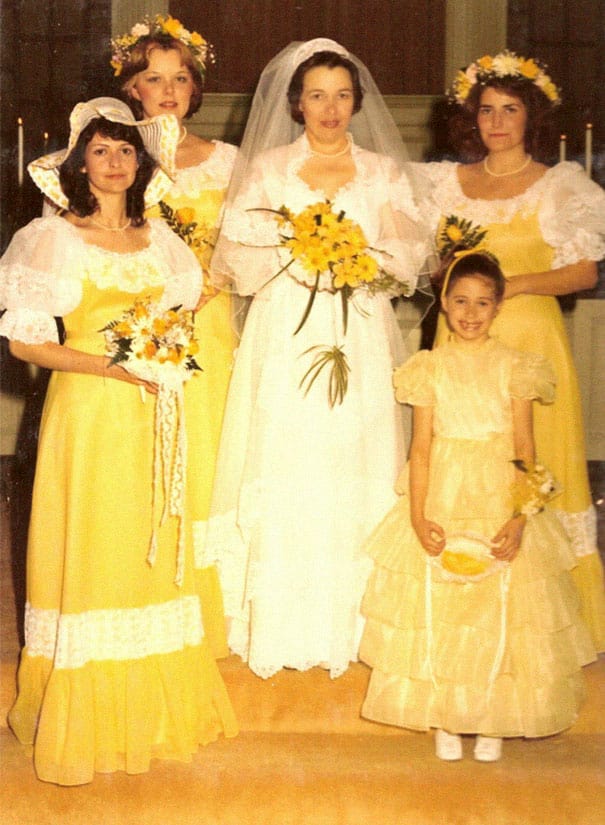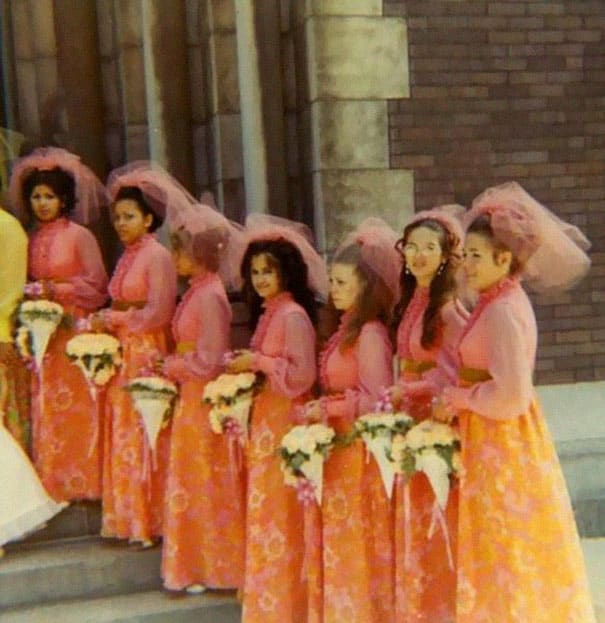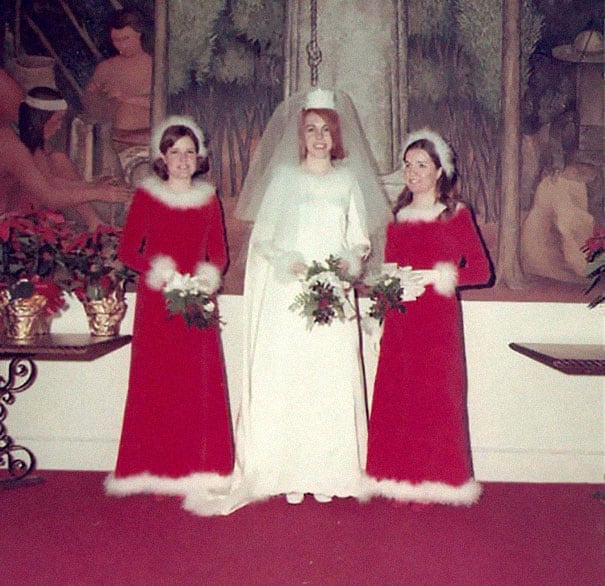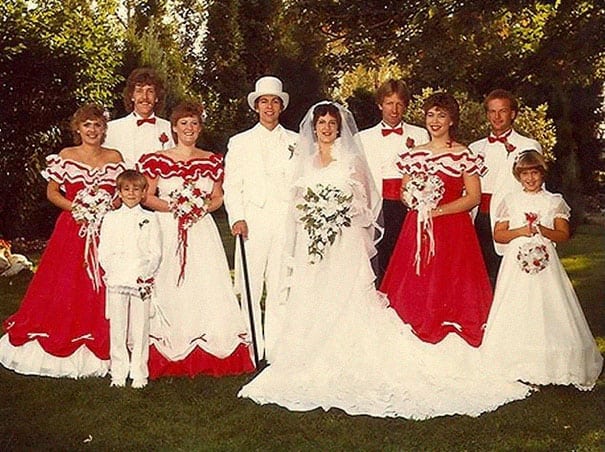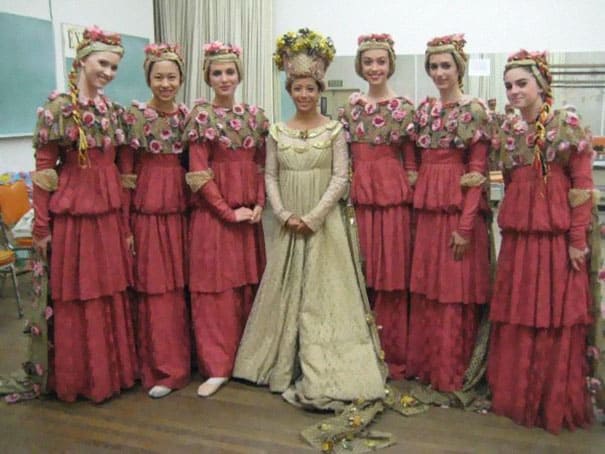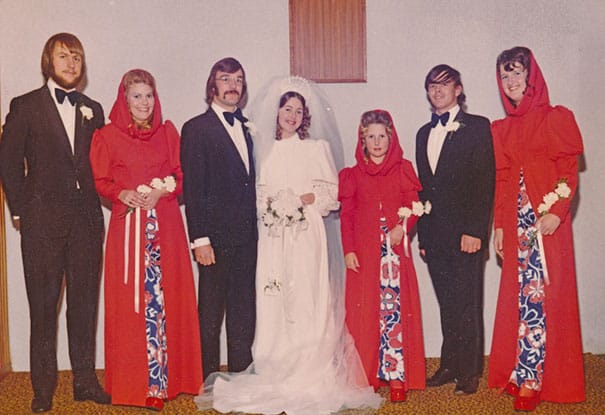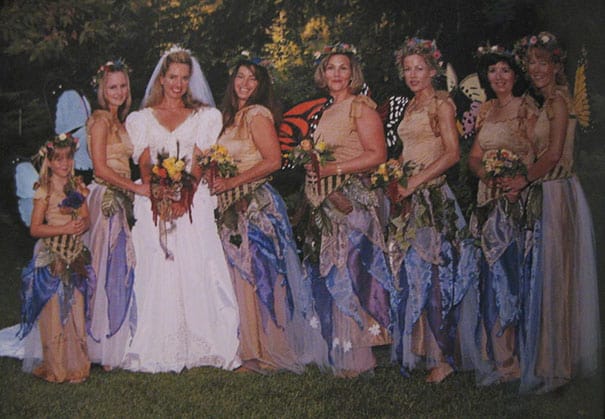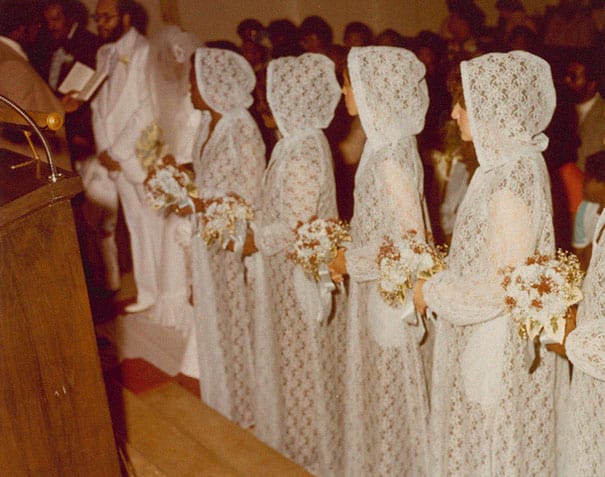The wedding industry has never stopped growing. Even through the pandemic, brides have planned (or postponed) their special days just the same as they always have. All the perfect details have to go into place to ensure that the day goes off without a hitch. Wedding cake makers, photographers, florists, all must bow to the every want and need of the bride. While the groom is the other half of the wedding, we all know the truth. The bride rules with an iron fist. Regardless of in-laws, overbearing mothers, or fussy friends, the bride gets the ultimate power in all the decisions made for her big day. But what happens when the bride has terrible taste? Bridesmaids fall victim to the bad tastes of a bride more often than people realize. And we’re here to prove it. Throughout the recent past, bridesmaids have surrendered their personal style choice to the queen of the day. And sometimes the taste of the bride was downright hideous. And nothing exemplifies that more than these hideous and ridiculous bridesmaid dresses from decades past.
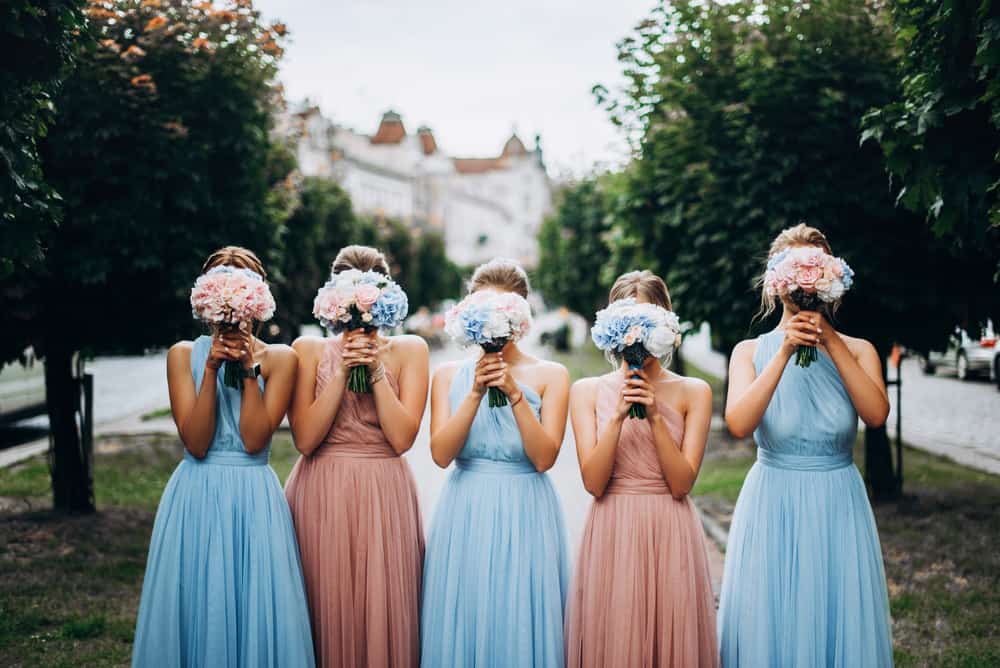
First thing’s First – Why are Bridesmaids a thing?
Nowadays, brides-to-be make a huge deal out of asking their most trusted female friends or family to join them on their big day. Many brides will even create special care packages to pop the question to their closest friends: “Will you be my bridesmaid?”. And as for the role of Maid of Honor, some women get downright vicious and petty over who gets the title. Like it’s their own little show. But where did this strange tradition of selecting bridesmaids come from? Well, there are multiple accounts.
According to Wedding Wire, “When it comes to the history of bridesmaids, one of the most well-known origin stories comes from the story of Jacob in the Bible. His two wives, Leah and Rachel, were escorted to the wedding by their own servants—the brides’ maids. Back in biblical times, bridesmaids were not necessarily friends or relatives, they were actually domestic workers who catered to the bride’s every need during the wedding day.” And the bridesmaids had many different roles to fulfill.

